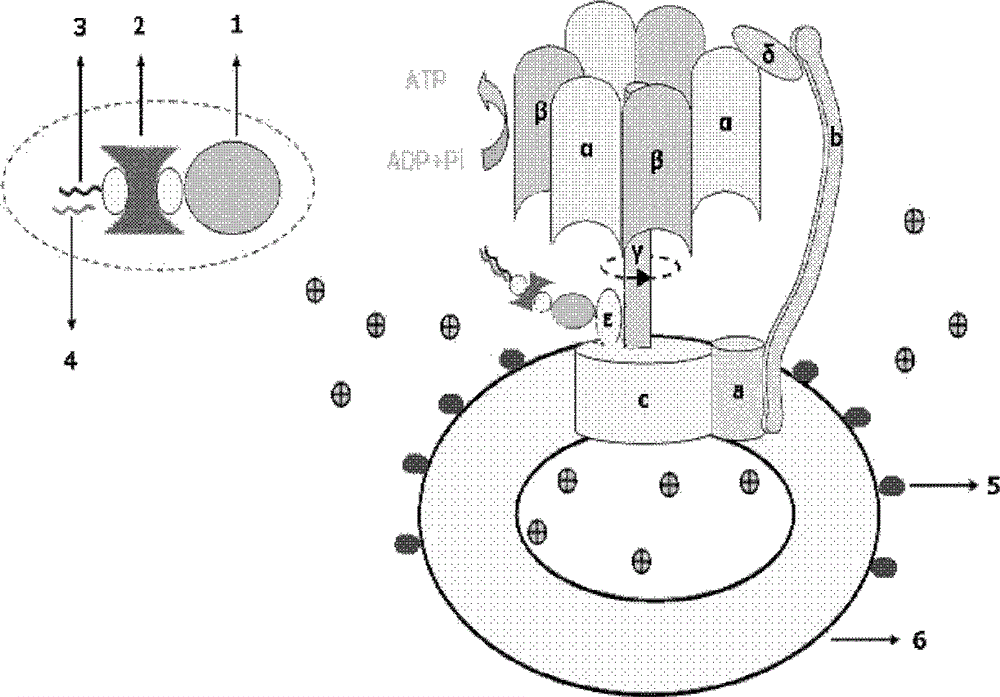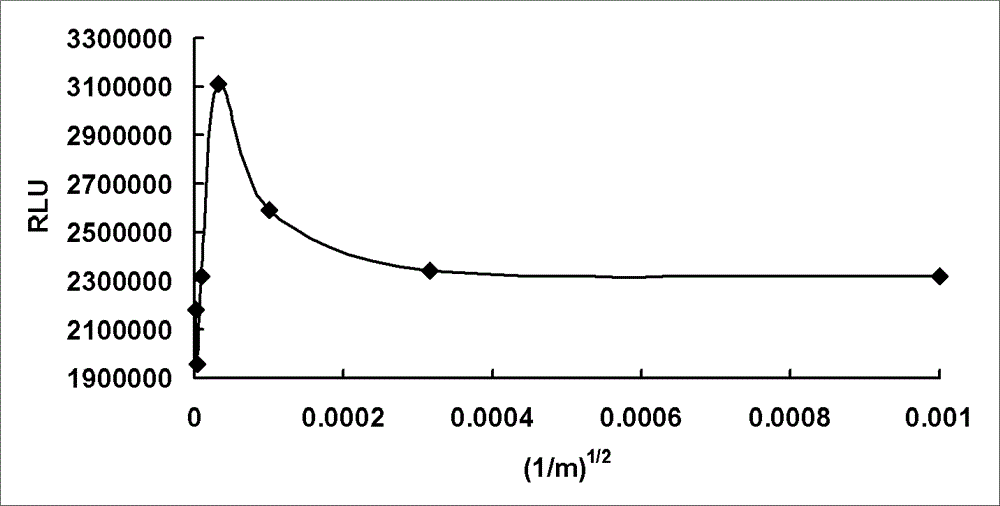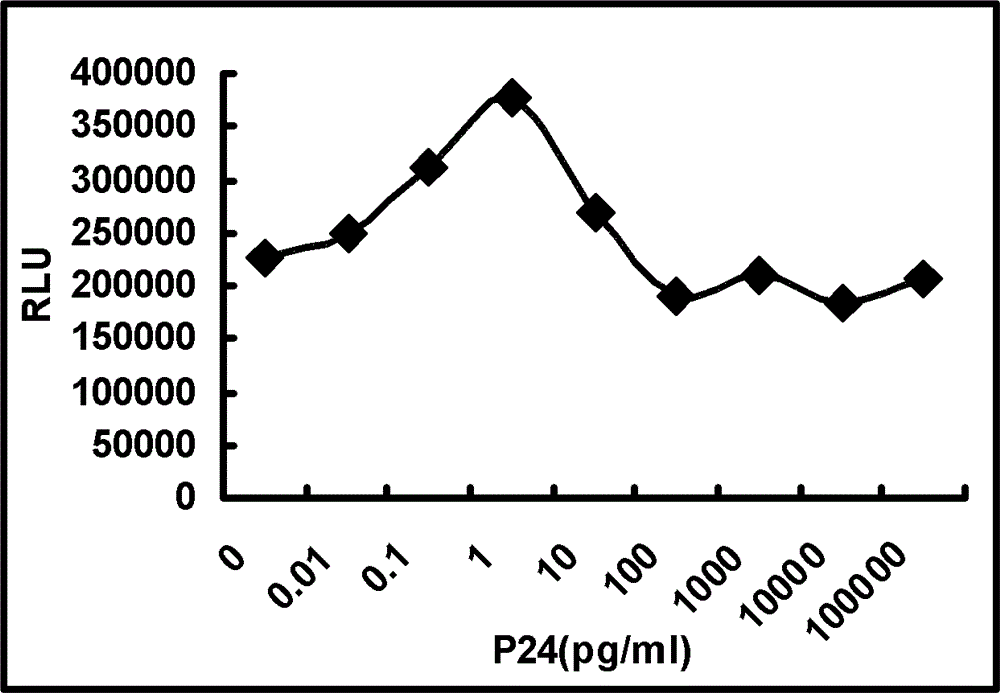Construction and detection method of biomolecular motor resonance sensor
A biosensor and molecular motor technology, applied in the new biological field of nano-molecular motor sensor, to shorten the reaction detection time and increase the probability of molecular collision
- Summary
- Abstract
- Description
- Claims
- Application Information
AI Technical Summary
Problems solved by technology
Method used
Image
Examples
preparation example Construction
[0041] 1. Preparation of homogeneous chromophore:
[0042] Inoculate liquid culture medium (see appendix) from thermumicrobium roseum (ATCC 27502) bacteria at a ratio of 1:100, culture at 60°C, 150rpm, for 24h. Then 4000rpm, 30min, 4 ℃ centrifugation to collect bacteria. The cells were resuspended with extraction buffer (20mM Tris-Cl pH8.0, 100mM NaCl, 2mM MgCl2, 1mM DTT), and the supernatant was removed by centrifugation (6000rpm, 10min, 4°C). Add extraction Buffer to resuspend the bacteria (approximately 1 g in 10 ml Buffer), then add a final concentration of 1 mMPMSF, and sonicate for 30 min on ice (5 s of sonication, 8 s off). Centrifuge the broken cells (25,000g, 30min, 4°C), remove the precipitate and get the supernatant. The supernatant was ultracentrifuged (145,000g, 1h, 4°C), and the precipitate was taken as the chromatophore (chromophore), and then the chromatophore with uniform size was obtained through density gradient centrifugation. Finally, resuspend the pell...
PUM
 Login to View More
Login to View More Abstract
Description
Claims
Application Information
 Login to View More
Login to View More - R&D
- Intellectual Property
- Life Sciences
- Materials
- Tech Scout
- Unparalleled Data Quality
- Higher Quality Content
- 60% Fewer Hallucinations
Browse by: Latest US Patents, China's latest patents, Technical Efficacy Thesaurus, Application Domain, Technology Topic, Popular Technical Reports.
© 2025 PatSnap. All rights reserved.Legal|Privacy policy|Modern Slavery Act Transparency Statement|Sitemap|About US| Contact US: help@patsnap.com



